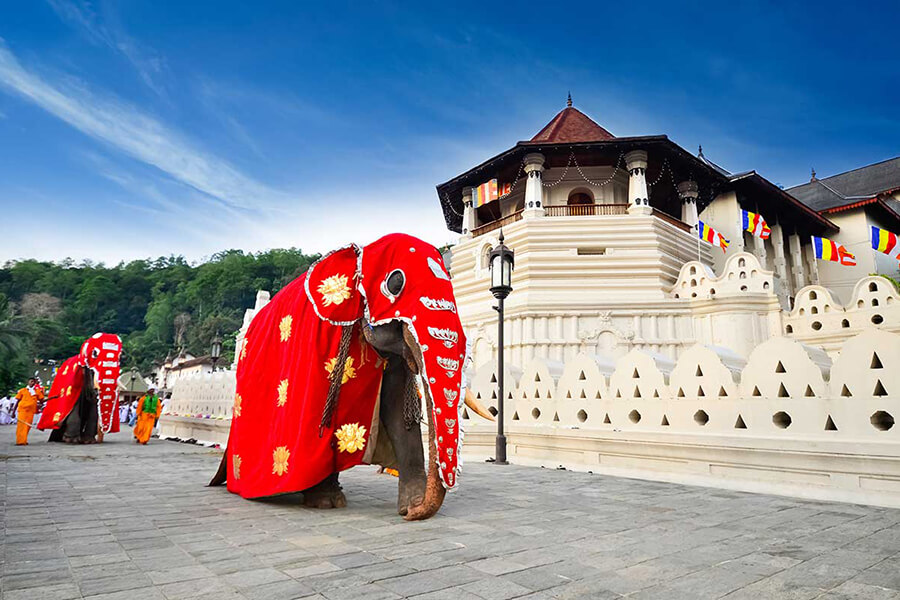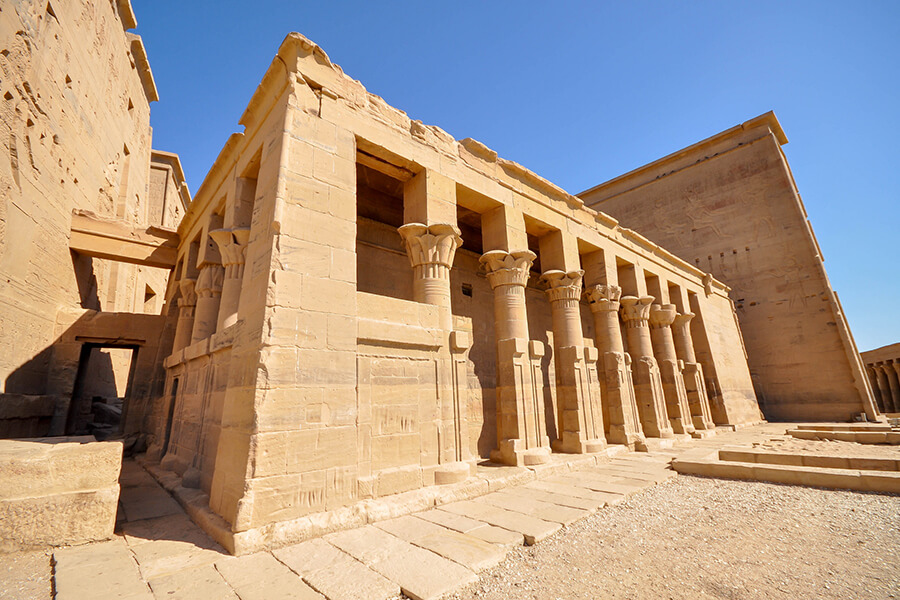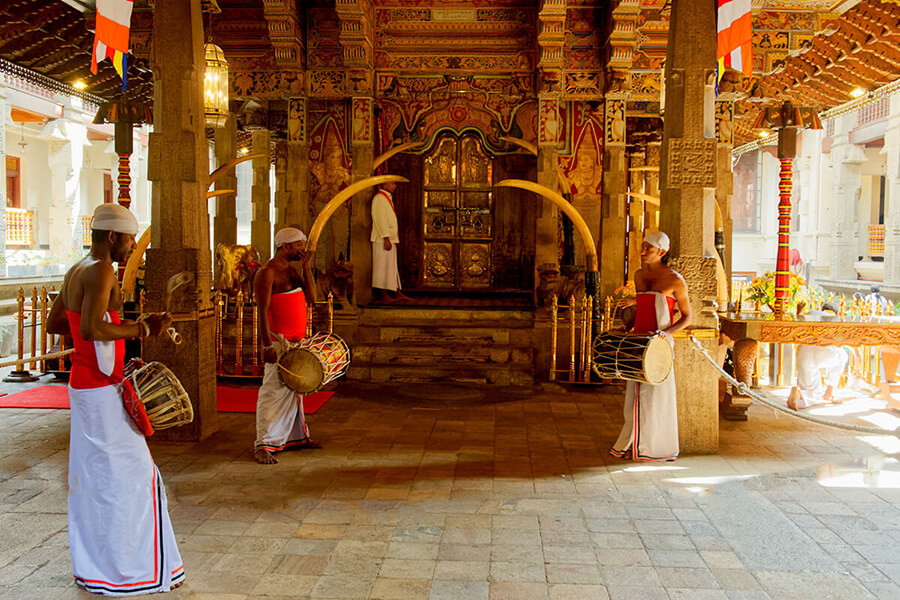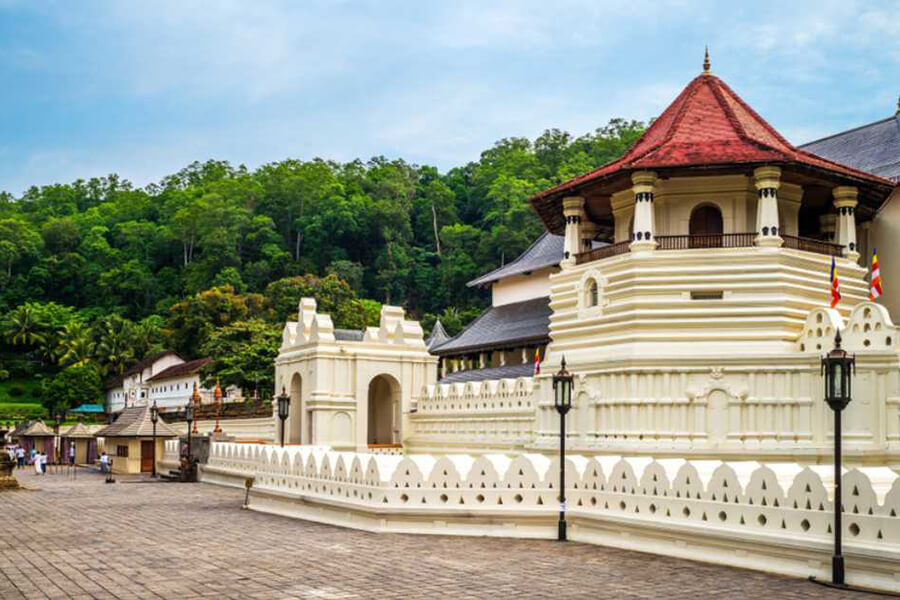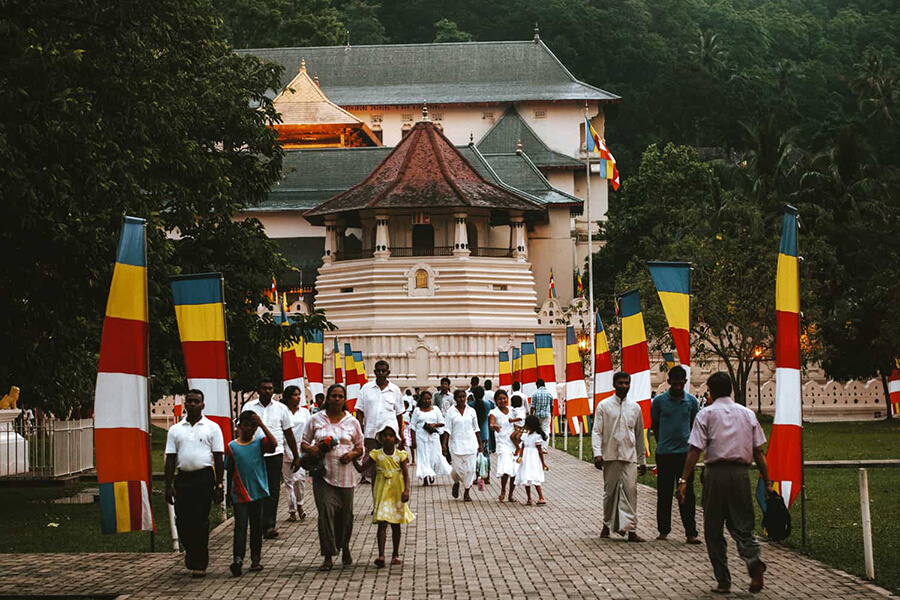If you are looking for a unique and spiritual experience on your Sri Lanka tour, you should not miss visiting the Temple of the Tooth, also known as Sri Dalada Maligawa. This temple is one of the most sacred Buddhist shrines in the world, as it houses the relic of the tooth of the Buddha, which is believed to have miraculous powers and influence over the country's governance.
Who built the Temple of the Tooth - a great temple because of its design and high expertise?
The Temple of the Tooth is located in the royal palace complex of the former Kingdom of Kandy, which was the last independent monarchy of Sri Lanka. The temple was first built in 1603 by King Vimaladharmasuriya I, who enshrined the tooth relic in a two-story building within the palace. The current temple dates back to the 18th century when it was renovated and expanded by King Kirti Sri Rajasinha and King Rajadhi Rajasinha. The temple has a distinctive Kandyan architecture, with a golden roof, white walls, red columns, and elaborate carvings.
What is the Kandy Tooth Temple Ceremony?
The Temple of the Tooth is not only a place of worship, but also a site of cultural and religious festivities. Every day, there are three rituals performed in the inner chamber of the temple, where the tooth relic is kept in a golden casket. These rituals are called Thevava, or offerings, and they involve chanting, drumming, dancing, and lighting lamps. The most important ritual is the evening Thevava, which attracts hundreds of devotees and tourists who want to catch a glimpse of the casket as it is taken out from its shrine.
The temple also hosts an annual festival called Esala Perahera, or the Festival of the Tooth, which is one of the grandest and oldest celebrations in Sri Lanka. The festival lasts for ten days in July or August, and it features a spectacular procession of elephants, dancers, musicians, fire-eaters, whip-crackers, and flag-bearers. The highlight of the festival is when the tooth relic is carried on a decorated elephant through the streets of Kandy, accompanied by thousands of pilgrims and spectators.
Why are the Tooth Relics so important and attractive to tourists?
The tooth relic is considered to be one of the most precious and revered relics of Buddhism, as it is said to be one of the teeth that remained after the Buddha's cremation. According to legend, the tooth was smuggled to Sri Lanka in the 4th century AD by Princess Hemamali and her husband Prince Dantha, who hid it in her hair. Since then, the tooth has been a symbol of sovereignty and legitimacy for the Sinhalese kings, who built temples to protect and honor it. The tooth is also believed to have miraculous powers, such as healing diseases, granting wishes, and bringing rain.
Where is the Temple of the Tooth Located?
The Temple of the Tooth is situated in Kandy, a city in central Sri Lanka that was once the capital of the Kandyan Kingdom. Kandy is about 115 km from Colombo, the current capital city and it can be reached by train, bus, or car. Kandy is also a UNESCO World Heritage Site, as it preserves many historical and cultural attractions, such as the Royal Botanical Gardens, the Kandy Lake, and the Udawattakele Forest Reserve.
How to Visit the Temple of the Tooth?
The Temple of the Tooth is open to visitors every day from 5:30 a.m. to 8:00 p.m. However, there are specific times when you can enter the inner chamber where the tooth relic is kept. These times are 5:30 a.m. to 7:00 a.m., 9:30 a.m. to 11:00 a.m., and 6:30 p.m. to 8:00 p.m. You will need to buy a ticket at the entrance gate, which costs 1500 LKR (about 8 USD) for foreigners and 100 LKR (about 0.5 USD) for locals. You will also need to dress modestly and cover your shoulders and knees. You will have to remove your shoes and socks before entering the temple premises.
To conclude, the Temple of the Tooth is a must-see attraction.
The Temple of the Tooth is a must-see attraction for anyone who wants to experience the rich history, culture, and spirituality of Sri Lanka. It is a place where you can admire the stunning architecture, witness the vibrant ceremonies, and feel the presence of one of Buddhism's most sacred relics.

